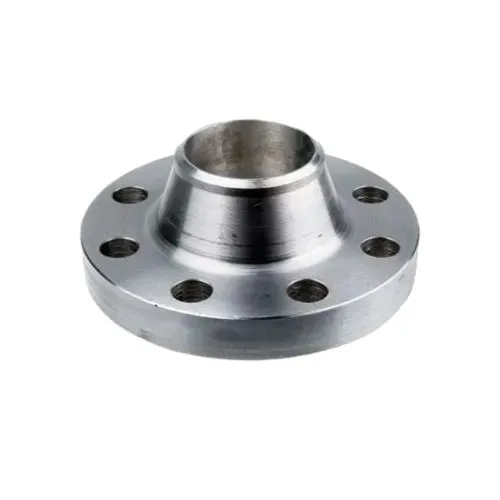-
Cangzhou Yulong Steel Co., Ltd.
-
Phone:
+86 13303177267 -
Email:
admin@ylsteelfittings.com
- English
- Arabic
- Italian
- Spanish
- Portuguese
- German
- kazakh
- Persian
- Greek
- French
- Russian
- Polish
- Thai
- Indonesian
- Vietnamese
- Zulu
- Korean
- Uzbek
- Hindi
- Serbian
- Malay
- Ukrainian
- Gujarati
- Haitian Creole
- hausa
- hawaiian
- Hebrew
- Miao
- Hungarian
- Icelandic
- igbo
- irish
- Japanese
- Javanese
- Kannada
- Khmer
- Rwandese
- Afrikaans
- Albanian
- Amharic
- Armenian
- Azerbaijani
- Basque
- Belarusian
- Bengali
- Bosnian
- Bulgarian
- Catalan
- Cebuano
- China
- China (Taiwan)
- Corsican
- Croatian
- Czech
- Danish
- Esperanto
- Estonian
- Finnish
- Frisian
- Galician
- Georgian
- Kurdish
- Kyrgyz
- Lao
- Latin
- Latvian
- Lithuanian
- Luxembourgish
- Macedonian
- Malgashi
- Malayalam
- Maltese
- Maori
- Marathi
- Mongolian
- Myanmar
- Nepali
- Norwegian
- Norwegian
- Occitan
- Pashto
- Dutch
- Punjabi
- Romanian
- Samoan
- Scottish Gaelic
- Sesotho
- Shona
- Sindhi
- Sinhala
- Slovak
- Slovenian
- Somali
- Sundanese
- Swahili
- Swedish
- Tagalog
- Tajik
- Tamil
- Tatar
- Telugu
- Turkish
- Turkmen
- Urdu
- Uighur
- Welsh
- Bantu
- Yiddish
- Yoruba

Nov . 11, 2024 11:17 Back to list
316l stainless steel pipe
Understanding 316L Stainless Steel Pipe Features, Applications, and Benefits
316L stainless steel pipe is a widely used material in various industries, renowned for its excellent corrosion resistance, high tensile strength, and versatility. It is a low-carbon version of 316 stainless steel, offering enhanced weldability and reduced risk of carbide precipitation during welding. This article delves into the key features, applications, and benefits of 316L stainless steel pipe.
Key Features of 316L Stainless Steel Pipe
1. Corrosion Resistance One of the standout features of 316L stainless steel is its exceptional resistance to corrosion, particularly in chloride environments. This makes it ideal for use in marine applications and chemical processing where exposure to corrosive substances is a concern.
2. Low Carbon Content The low carbon content (less than 0.03%) in 316L provides better resistance to sensitization, reducing the risk of intergranular corrosion. This characteristic allows the material to maintain its integrity in high-temperature applications.
3. Durability and Strength 316L stainless steel is known for its durability and high tensile strength, providing stability in structural applications. The material maintains its strength even at elevated temperatures, making it suitable for environments where mechanical stress is a factor.
4. Weldability The alloy's composition lends itself to easy welding and fabrication, making it a preferred choice in construction and manufacturing processes. The low risk of weld-related issues, such as chromium carbide precipitation, further enhances its utility in welded structures.
5. Formability 316L stainless steel can be easily formed into different shapes and sizes, accommodating a wide range of design specifications. This flexibility is essential in many industrial applications where custom fittings are required.
Applications of 316L Stainless Steel Pipe
The versatility of 316L stainless steel pipe allows it to be utilized across various sectors
- Chemical Processing Due to its resistance to aggressive chemicals, 316L pipes are standard in chemical processing plants. They are used for transporting corrosive substances, ensuring safety and efficiency.
316l stainless steel pipe

- Marine Applications The marine industry benefits significantly from 316L stainless steel, as its resistance to corrosion makes it suitable for shipbuilding and offshore platforms, which are routinely exposed to harsh ocean environments.
- Pharmaceutical and Food Processing In the pharmaceutical and food industries, cleanliness and hygiene are paramount
. 316L stainless steel pipes are often employed in systems that demand high sanitary standards due to their non-reactive nature and ease of cleaning.- Oil and Gas Industry The oil and gas industry requires materials that can withstand extreme conditions, including high pressures and temperatures. 316L stainless steel pipes meet these demands, proving essential in pipeline construction and maintenance.
- Architectural Applications Beyond industrial uses, 316L stainless steel pipes are increasingly found in architectural applications due to their aesthetic appeal and longevity. They are used in handrails, balustrades, and decorative elements.
Benefits of Using 316L Stainless Steel Pipe
1. Long Service Life The durability of 316L stainless steel translates to a long service life, reducing the need for frequent replacements and the associated costs.
2. Cost-Effective While initially more expensive than some other materials, the long-term performance, reduced maintenance costs, and longevity of 316L stainless steel pipes make them a cost-effective choice over time.
3. Sustainability Stainless steel is recyclable, making 316L a sustainable choice for environmentally-conscious industries. Its durability also contributes to lower resource consumption over the lifecycle of products.
4. Safety and Hygiene The non-reactive properties and ease of sanitation of 316L stainless steel pipe ensure compliance with safety standards and contribute to the health of consumers in food and pharmaceutical sectors.
In conclusion, 316L stainless steel pipe is a vital material in modern industry, characterized by its superior corrosion resistance, durability, and versatility. Its applications span various fields, including chemical processing, marine construction, and pharmaceuticals, making it an indispensable choice for engineers and manufacturers seeking reliability and longevity in their materials. Whether for structural, sanitary, or aesthetic purposes, 316L stainless steel continues to play a crucial role in advancing industrial technology.
Latest news
-
ANSI 150P SS304 SO FLANGE
NewsFeb.14,2025
-
ASTM A333GR6 STEEL PIPE
NewsJan.20,2025
-
ANSI B16.5 WELDING NECK FLANGE
NewsJan.15,2026
-
ANSI B16.5 SLIP-ON FLANGE
NewsApr.19,2024
-
SABS 1123 FLANGE
NewsJan.15,2025
-
DIN86044 PLATE FLANGE
NewsApr.19,2024
-
DIN2527 BLIND FLANGE
NewsApr.12,2024
-
JIS B2311 Butt-Welding Fittings LR/SR 45°/90° /180°Seamless/Weld
NewsApr.23,2024











